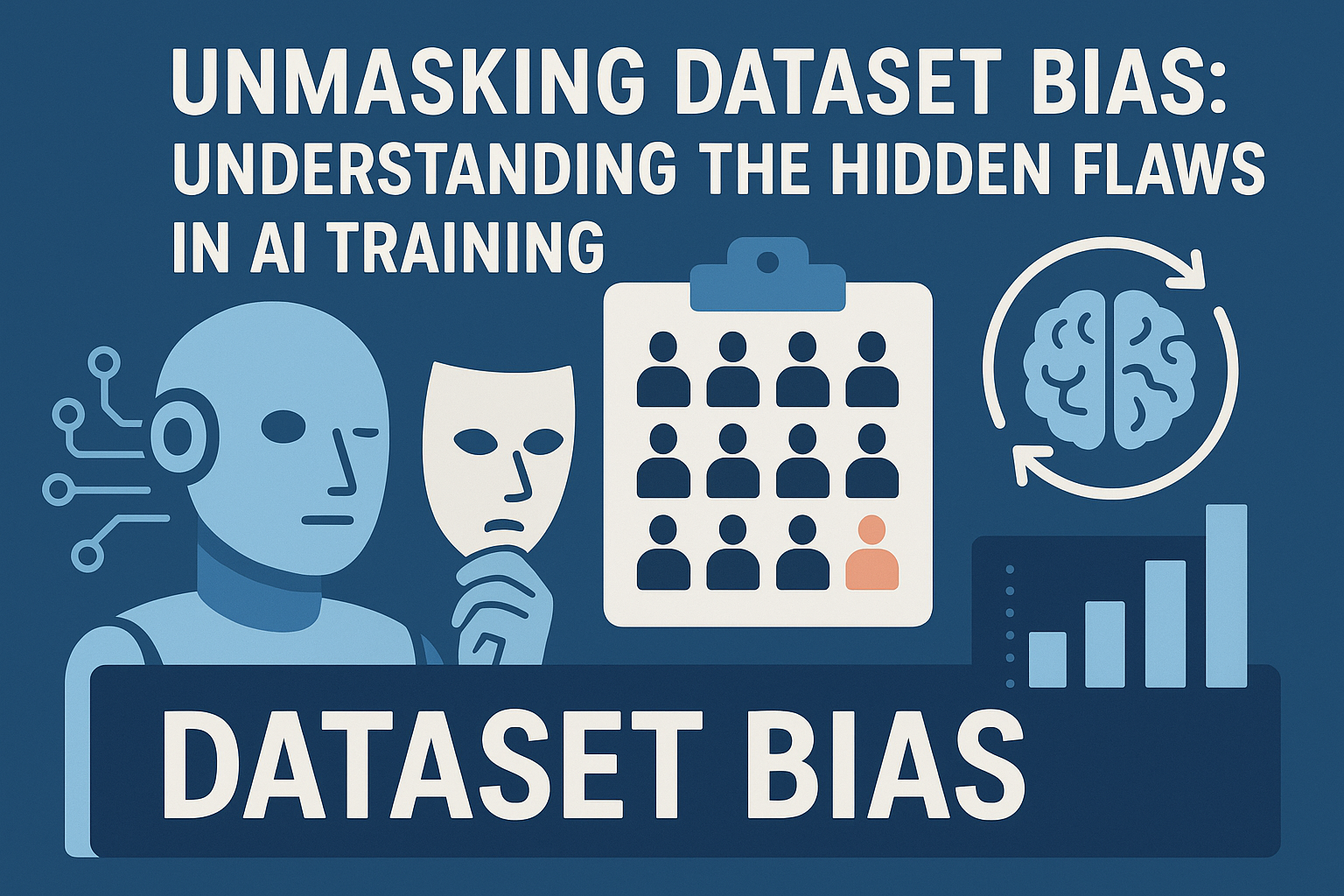Artificial Intelligence systems are only as good as the data they learn from. But what happens when that data is flawed? Enter dataset bias, an often invisible but deeply consequential issue that silently shapes AI-driven decisions, perpetuating inequality and misrepresentation in everything from hiring algorithms to healthcare diagnostics.
To tackle the roots of the problem, we must first decode the various types of dataset bias that are woven into the foundation of many machine learning models.
What Is Dataset Bias?
Dataset bias occurs when the data used to train an algorithm is unbalanced, unrepresentative, or skewed in ways that distort the real world. These biases aren’t always intentional, but their consequences are real—often amplifying existing social inequalities.
Types of Dataset Bias: Explained with Real-World Examples
Here’s a breakdown of the most critical types of dataset bias that researchers, developers, and policymakers must reckon with:
Type of bias | Definition | Example | Impact |
Sampling Bias | When certain groups are underrepresented or missing in the data sample. | Language models trained primarily on English under-perform on other languages. | Limits performance and fairness in multilingual or multicultural settings. |
Label Bias | When labels assigned to data reflect human stereotypes or prejudices. | Women in images labeled more as “smiling” or “fashionable” regardless of context. | Reinforces gender stereotypes in image recognition or advertising systems. |
Measurement Bias | When tools used for data collection yield systematically skewed results. | Pulse oximeters show less accurate readings for people with darker skin tones. | Health disparities and diagnostic errors, especially in clinical AI applications. |
Historical Bias | When data reflects past societal inequities, even if collected accurately. | Predictive policing models that over-target communities with a history of over-policing. | Perpetuates systemic injustice under the guise of objectivity. |
Aggregation Bias | When diverse groups are averaged into one category, erasing important details. | Treating all Asian ethnicities as a single monolithic group in demographic datasets. | Loss of nuance, resulting in misinformed or inequitable policy or business decisions. |
Why It Matters: The Real-World Cost of Bias
Healthcare: A 2020 study found that pulse oximeters—used to measure blood oxygen—were three times more likely to miss hypoxemia in Black patients compared to white patients. This is a clear case of measurement bias with potentially fatal consequences.
Criminal Justice: The now-notorious COMPAS algorithm used in U.S. courts was found to disproportionately label Black defendants as high-risk, showcasing historical bias embedded in sentencing data.
Content Moderation: In social media platforms, label bias has been observed where African American Vernacular English (AAVE) is flagged more frequently by moderation algorithms trained on “standard” English.
“Data is not neutral. It reflects the values of those who collect it.”
— Cathy O’Neil, author of Weapons of Math Destruction
Unlock the Future of AI -
Free Download Inside.
Get instant access to HonestAI Magazine, packed with real-world insights, expert breakdowns, and actionable strategies to help you stay ahead in the AI revolution.



